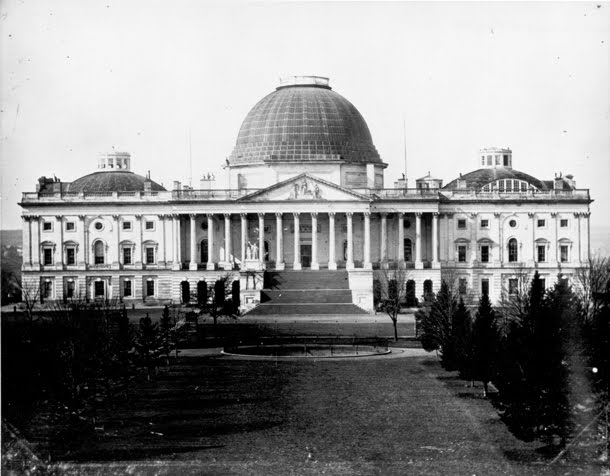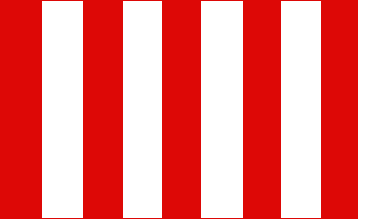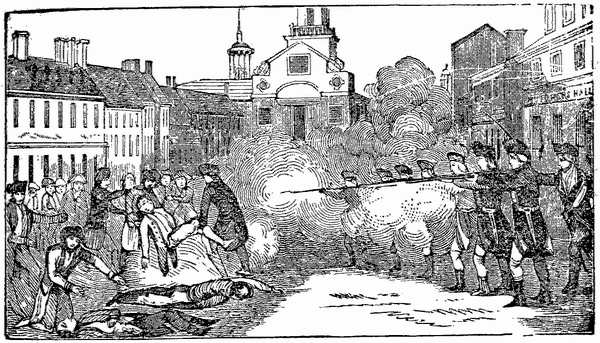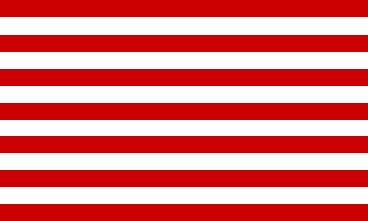From The Ohio Republic:
Saturday, September 4, 2010Understanding the gold standard
Libertarians have been calling for a gold standard to replace our fiat currency (meaning, currency backed by nothing -- or even worse, currency backed by debt). But there are two kinds of gold standards, as Michael Rozeff points out in DumpDC: a free-market gold standard, which ensures that there is a natural relationship between gold (or silver) and economic activity; and a gold standard based on government-created currency. With a natural relationship (which requires that there is no governmental intervention, event that of coining the money), inflation is rare and mild, and the value of money tends to rise over time, protecting the savings of the people.
The alternative, which, as Mr. Rozeff points out, is the one being pressed by the central bankers, is a gold-based world currency, which will in time become a fiat currency, just as the dollar did -- leading to periodic panics/depressions, and robbery of the people by the central bankers.
The take-home is, we must watch what officials are trying to push on us.
Only a return to a really free market, currency included, will act in the interest of all of us. Otherwise, we will continue the same old, same old, until we are robbed into slavery by the bankers and their friends in government.
Read the link to gain a greater understanding of the underlying ideas.
From Dump DC:
We Don’t Need No Stinkin’ Gold Standard
…at least not a Big Government Gold Standard
by Michael Rozeff
At Davos in January of this year at a G20 meeting, President Sarkozy of France called for a new global reserve currency. At the 2009 meeting, Russian President Medvedev suggested a new reserve currency to replace the dollar. A Chinese central bank governor has supported a similar idea. The United Nations Conference on Trade and Development wants to replace the dollar. The G20 has moved in this direction using the International Monetary Fund (IMF). The Bank for International Settlements is a potential institutional vehicle for a global central bank and a global currency. On April 26 of this year, Jean-Claude Trichet, President of the European Central Bank, addressed the Council on Foreign Relations. He strongly emphasized the goal of uniformity and uniform global governance of banking.
Clearly, important political figures throughout the world are agitating for changes in the international financial system. These changes would (i) reduce the role of the dollar, (ii) increase the role of developing states, (iii) reduce the role of the United States, (iv) aim for a global currency, (v) increase the role of international financial institutions, (vi) increase the role of France, Germany, and the BRIC countries, and (vii) aim for global uniformity.
These changes would maintain the existing system of central banks and fiat currencies. They are designed to shore up the existing fiat money system, not replace it. They are designed to perpetuate the existing system of government-controlled currencies being used as money. They are clearly steps in the direction of a world central bank and world government.
Heads of State such as Sarkozy and Medvedev have seen their economies be adversely affected by the actions of American central bankers. They want an international system that insulates them from American monetary and fiscal policies. They want greater control over their currencies, even if this means a world currency that they jointly manage or control.
Moreover, such leaders are dedicated socialists who relish power and control. In his speech, Sarkozy managed to call for international labor, health, and environmental standards. He proposed a tax on financial transactions, which would have to be international to be effective. He called again for a “moral” capitalism, which is code for being anti-free market. He also called for world climate control. One must have the deepest suspicion of any monetary program proposed by this man.
France, Germany, the European Central Bank, Russia, India, and China are all much more favorable toward gold as a reserve asset than is the United States. They have shown this through their actions in holding or adding to their gold reserves. China has promoted gold as an investment. Although they have not spoken openly of gold, they are moving toward the increased importance of gold in the international monetary arrangements.
In other words, they are aiming at some version of a gold standard. The idea seems to be to go back to a pre-1971 system while bolstering the roles of the IMF and the BIS and reducing the dollar standard to a standard of a basket of currencies linked to gold.
The idea is to prolong the life of national central banks and fiat currencies by a gold linkage.
This, I say, is something we don’t need. We don’t need no stinkin’ gold standard that is another version of government-controlled currencies, accompanied by government suppression of monetary freedom and privately or market-produced money.
What we need is market-produced money. This may take a number of possible forms, such as e-money backed by metals such as silver and gold, or silver coin, or gold coin and bullion for larger transactions.
Market-produced money differs radically from government-controlled and government-produced money. With market-produced money, there cannot be a systematically injurious deflation or harmful shortage of money. If the demand for money exceeds the supply to the point where the costs of a money shortage to demanders are exceeding the costs of producing more money, the market will produce more money and eliminate the shortage.
By the same token, with market-produced money, there cannot be a systematically injurious inflation or excess of money. If the supply of a money exceeds its demand at a given price, the market will reduce the supply and demanders will seek alternative money, thereby eliminating the excess demand.
With market-produced money, variations in the demand and supply of money will be of no greater consequence than the analogous variations of any other of the thousands of goods and services that the government does not control and whose prices are market-determined.
With market-produced money, there cannot be a money-caused business cycle of any substantial consequence, because prolonged alterations in money supply and interest rates caused by government control of money will be absent.
This means that with market-produced money, we can say goodbye to unemployment caused by business cycles induced by government mismanagement of currencies.
The Great Depression occurred at a time when the gold backing of government money was extensive. The current hardships are occurring at a time when gold is far, far less important in America’s monetary system. The common feature of these large depressions is not the presence or absence of gold backing. It is the presence of government-controlled money, with or without gold backing.
The most common meaning of “gold standard” associates this term with government-controlled money, not privately-produced money. This is why we don’t need no stinkin’ gold standard.
Michael S. Rozeff is a retired Professor of Finance living in East Amherst, New York. He is the author of the free e-book Essays on American Empire.
Saturday, September 4, 2010
Subscribe to:
Post Comments (Atom)
.gif)






























No comments:
Post a Comment